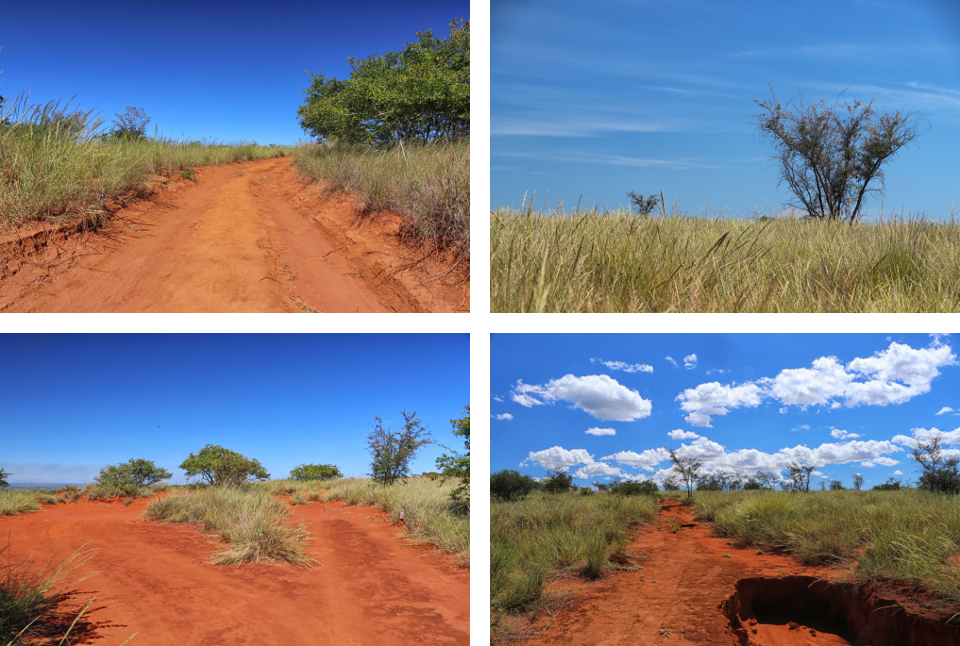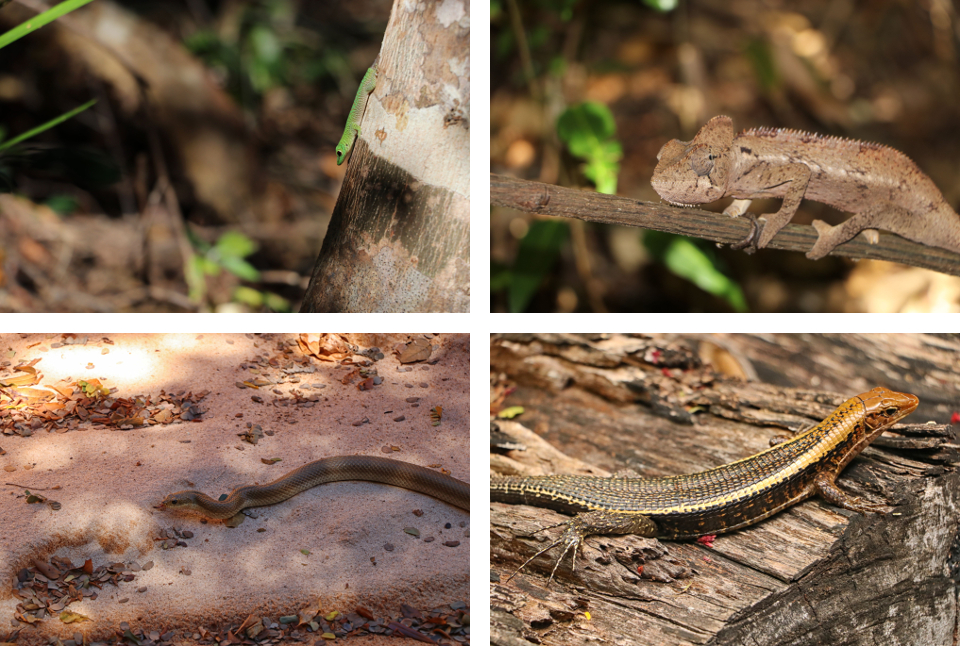Tropical forest full of lemurs, savannah, red canyon looking like surface of Mars or lake full of crocodiles. Do not hesitate as you will be blown away by Ankarafantsika National Park which combines all these elements. Landscape changes like in a kaleidoscope and one day is enough to see it all.
Ankarafantsika is a relatively small national park in north-west part of Madagascar. Park is quite far away from main tourist destinations. You have to reserve good chunk of time if you want to get there and number of annual visitors is just 10 thousands. 10 000 is half of a mob of tourists who storm Vatican EVERYDAY! Conclusion? You can feel you are the only one in this natural and pristine environment .
General Information – Ankarafantsika National Park
Ankarafantsika is one of 25 National Parks in Madagascar. It was created in 2002 and covers 135 000 hectares. The park is highly bio-diversities, during one visit you could feel like you are in completely different places in a short space of time. You can find several types of a dry thick tropical forest there. Unfortunately around 90% of original forest has been lost. Local people cut the trees to have a land to farm or to produce charcoal which is the main fuel. The poorest also look for food in the forest sometimes even cook on the spot which cause fires. Whatever is left it is now transformed to protected areas. Only when we got to Madagascar we understood the situation. It is hard to blame poor and hungry people as they just trying to survive. In Ankarafantsika you can also find lake, savannah and amazing red canyon.
Practical Information – Ankarafantsika National Park
First you have to go to Ankarafantsika National Park office located in Ampijoroa (just by the National road no. 4). You can choose different walks, pay for the guide and entrance fee. Guide is mandatory if you would like to enter every National Park in Madagascar and fee depends from a walk/itinerary. The most important parts you can see in one day but if you really want to go deep you can spend 2-3 days there.
Entrance fee:
- 55 000 Ar. (14€) for an adult,
- 25 000 Ar. (6€) for a child
You can get there by car (at least 8h drives from Antananarivo). There is taxi brousse going from Antananarivo to Mahajanga. It’s on national road no.4 and since the park entrance is just by the road it’s a good chance you can go like this. If you think about this option accommodation in the park might be the best choice.
Walks/Circuits in Ankarafantiska National Park:
Circuit Baobab – short, straightforward walk starting from sacred Ravelobe Lake. All together about 3km or around 1 hour. Walk brings you to Adasonia Bonisis which is an endemic type of Baobab. Heads of National Park trying to save this specie but young trees doesn’t want to grow and old ones are being struck by cyclones. Baobab trees which we saw are around 300-400 years old and stand 35m tall. Guide fee is 20 000 – 25 000 Ar (5-6€) depending how many participants.
Ankarokaroka Circuit – route leading to Ankarokaroka Canyon goes thru savannah. Length is about 7.5 km which takes around 3.5 hour. We wanted to save some time so we reached canyon on foot then went down and after coming back we were picked up by our driver. You can go by 4×4 both ways and just look at the canyon from the top which is a great option for elderly or families with small children. The route isn’t difficult but it’s all on open savannah space and heat is incredible and the way down is quite challenging. During rainy season you can only see canyon from the top and at the beginning of dry season trail down is almost disappearing which we faced ourselves. Guide fee depending on participants 40 000 – 50 000 Ar (10 – 13€).
Circuit Coquereli – route thru tropical forest which could be merged with canyon. Main activity is tracking animals like lemurs which you can see 8 species. A lot of birds, chameleons and 20 species of snakes which (thanks God!) are not venomous. The best time for bird watching is Septmeber. There is also 2 species of Orchids but not really colourful and stately. Trail it’s easy and undemanding total of 5km can be done in 2 hours. Remember you walk very slowly to allow guide track animals. Guide fee between 20 000 and 35 000 Ar (5 – 9€).
Circuit Haut du Lac – loop around Lake Ravelobe. On the way there is few spots with nice view of the lake and chance to see a lot of chameleons and snakes. If you are lucky you can spot a crocodile. All together 7km and 3 hours. Guide fee 40 000 – 50 000 Ar (10-13€).
Cruise on Lake Ravelobe – Cruise takes around 1 hour. They say your chances to see a crocodile are much higher. Guide fee based on 1-2 people – 40 000 Ar (10€).
Circuit Pachypodium – Botanical route 9km long which takes around 3 hours. Main goal is to observe Pachypodium plants endemic and endangered. You can also a lot of different species of plants, lizards and chameleons. Guide fee 40 000 – 50 000 Ar (10 – 13€).
Circuit Source de vie – 6km long route which should take 2.5h. It’s a great option for water birds lovers. It’s located near Ravelobe lake. Guide fee 30 000 – 40 000 Ar (8-10€).
Circuit Retendrika – Easy 7km trail. Should take around 2h and again is focusing on birds and endemic plants. Guide fee between 20 000 and 35 000 Ar (5 – 9€).
Night Walk – You could organise it in most of the parks in Madagascar. Usually you start after sunset between 6-8pm and it takes 1-1.5 hour. No need to reserve in advance, you ask in park office or directly with your guide.
Some of the routes you can combine in longer walks. We have used this option to do half of 2 different routes and then we had our driver waiting at one point to take us for lunch. This way we managed to see more in shorter period of time. They are more than helpful in park offices to shape your itinerary depending how much time you have on hand. If combining different routes guide fee may vary.
It’s a tricky one with guides in the Parks. Some speak very little or no English. Only in Ankarafantsika National Park there are 25-30 guides and average daily number of visitors is only 28. It’s not hard to imagine how tough it is to make money. That’s why we encourage everyone to leave a tip (even if the guide wasn’t outstanding) to support them out. Our driver advised 20 000 Ar. (5€) is a good tip if you are happy. We were really happy with every single one of them and they spend whole day with us so we usually doubled. Guide will not be offended if you offer little gift like a torch, hat, mosquito repellent or sunglasses. You can see there is a lack of all of these items. We can recommend our guide Olga.
When to visit Ankarafantsika National Park?
It all depends what you are interested in most so it’s hard to pick an ideal time. We were quite happy we decided to go in May (beginning of dry season and winter).
- Dry season – it’s the best time to visit canyon as you can go down. May is a good time to visit. Canyon is accessible, still almost no tourists, temperatures still quite high but slowly going down. Good chance to see wild life crocodiles still quite active but later on many reptiles hibernate.
- Rainy season – Ideal for flora and fauna lovers. Plants are blooming and animals are more active due to plentiful of food. Birds, insects and reptiles very active which hibernate in dry season (winter). You cannot go down to canyon even getting to the edge might be tricky as very muddy and off roads not accessible.
How to prep for a trek in Ankarafantsika National Park?
As you already know you can choose different routes and difficulty level varied. You will walk much slower than normal pace to allow guide track animals. Remember if you have a luxury of travelling with a car and driver you can try to see more by incorporating car into your treks.
The most important is sun protection. Heat is extreme on savannah and especially down in canyon. The best will be light breathable clothes ideally long sleeved or at least long pants to cover your legs. Some routes go thru high sharp edged grass and long loose pant leg will protect against mosquitoes and ticks. Mosquito repellent is a must especially by the lake you will be targeted by hordes of these bloodsuckers. We were using Mugga 50%. You have to remember it will work for only up to 4 hours in tropics because you sweat a lot. For shoes the best will be light trekking shoes or trail running shoes. Hat to cover your head and bandana or something similar to stop sweat pouring into your eyes. For one 3-4h walk we recommend to take at least 1.5l of water per head.
Accommodation and food – Ankarafantsika National Park
There is a restaurant by the park office where you can order lunch (usually 2 or 3 options) for certain hour. It’s a good option for one travelling by car or when going for shorter walks which allow you to come back for lunch. If you are going for a longer walk taking some food with you might be a good idea. There are bungalows and tents by the park office.
We stayed in Blue Vanga Lodge in a village outside Ankarafantsika National Park. You can get a lunch in a village but again you have to have a car.
More information about Ankarafantsika National Park you can find here (unfortunately in French only).
























